 The Occupational Safety and Health Administration (OSHA) measures illness and injury by using an acronym called DART. DART stands for “Days Away, Restricted and Transferred.” Companies use a formula designed by OSHA to calculate their DART. The variables used in this formula come from the company’s OSHA 300 form. The OSHA 300 form is used to track recordable injuries and illnesses within a given company in a given year.
The Occupational Safety and Health Administration (OSHA) measures illness and injury by using an acronym called DART. DART stands for “Days Away, Restricted and Transferred.” Companies use a formula designed by OSHA to calculate their DART. The variables used in this formula come from the company’s OSHA 300 form. The OSHA 300 form is used to track recordable injuries and illnesses within a given company in a given year.
Category: Safety
Back-to-School Safety
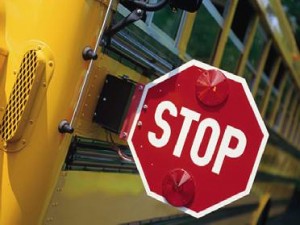 When summer comes to an end, children get ready to go back to school. This is a great time for parents to talk to their kids about how to safely travel to and from school. Following a few safety tips can help prevent children from suffering serious injuries.
When summer comes to an end, children get ready to go back to school. This is a great time for parents to talk to their kids about how to safely travel to and from school. Following a few safety tips can help prevent children from suffering serious injuries.
School Bus Safety Tips
- Children riding the bus to school should learn and practice a few safety rules for getting on and off the bus.
- Get to the bus stop early. Do not run to the bus.
- Wait until the bus has come to a complete stop before walking toward it.
- If crossing the street, wait for a signal from the bus driver. Look both ways to make sure there is no moving traffic from either direction.
- Always cross in front of the bus so the driver can see you.
- If the bus has lap and shoulder belts, use them.
- Once the bus is in motion, remain in your seat.
- If the window is open, keep your arms and head inside the bus at all times.
- Do not stand up to get off the bus until it has completely stopped.
- Only get off the bus at your assigned spot.
Walking Safety Tips
- Children should only walk to school alone if they are old enough and ready to make the walk safely.
- Children are not ready to walk to school without an adult until they are at least 10 years old.
- Younger kids cannot be trusted to make smart traffic choices on their own.
- Plan and practice a safe walking route with your child until she knows it well.
- Use streets with sidewalks, crosswalks and crossing guards. Avoid as many intersections as possible.
- Have children walk with a friend or in a group.
- Talk to your child about what to do if they are approached by a stranger.
Safety Tips for Drivers
- Drivers should be aware of children walking to school or to the bus stop. Everyone can follow a few safety tips to help kids get to school safely.
- When backing out of the driveway, watch for children walking to school or to a bus stop.
- On streets without crossing guards, watch out for children trying to cross the street.
- Be careful on streets without sidewalks or streets with on-street parking. It might be hard to notice a child behind a car.
- Be alert. Children may dart into the street without looking.
- Slow down.
via Injury Research and Policy Back-to-School Safety :: Nationwide Children’s Hospital, Columbus, Ohio.
Avoidable Workplace Health and Safety Hazards
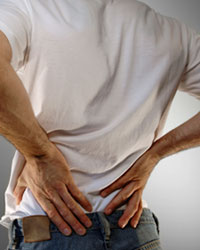 When it comes to non-fatal workplace injuries, the clear leaders are incidents of ergonomic problems and overexertion. They affect people in manufacturing, service, and office settings and regulatory bodies are increasingly cracking down on employers who ignore their employees ergonomic needs. Furthermore, because these injuries can give rise to chronic conditions, they result in one of the higher rates of lost work time.
When it comes to non-fatal workplace injuries, the clear leaders are incidents of ergonomic problems and overexertion. They affect people in manufacturing, service, and office settings and regulatory bodies are increasingly cracking down on employers who ignore their employees ergonomic needs. Furthermore, because these injuries can give rise to chronic conditions, they result in one of the higher rates of lost work time.
via 9 Avoidable Workplace Health and Safety Hazards | Inc.com.
Hand and Power Tool Safety
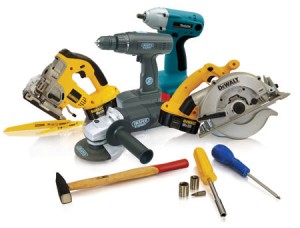 Hand and power tools are a common part of our everyday lives and are present in nearly every industry. These tools help us to easily perform tasks that otherwise would be difficult or impossible. However, these simple tools can be hazardous and have the potential for causing severe injuries when used or maintained improperly. Special attention toward hand and power tool safety is necessary in order to reduce or eliminate these hazards.
Hand and power tools are a common part of our everyday lives and are present in nearly every industry. These tools help us to easily perform tasks that otherwise would be difficult or impossible. However, these simple tools can be hazardous and have the potential for causing severe injuries when used or maintained improperly. Special attention toward hand and power tool safety is necessary in order to reduce or eliminate these hazards.
Communication Key to Workplace Safety
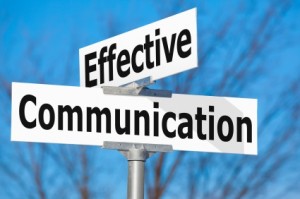 Dangerous working conditions not only pose threats to the safety and livelihood of workers, but also have major ramifications that can affect families, employers and communities. Research indicates the importance of the availability of safety information and presentation tips for organizations to help create more effective messages for employees:
Dangerous working conditions not only pose threats to the safety and livelihood of workers, but also have major ramifications that can affect families, employers and communities. Research indicates the importance of the availability of safety information and presentation tips for organizations to help create more effective messages for employees:
- Get personal – Research showed that workers preferred to receive important information verbally from their immediate supervisors. Having direct interaction about safety with the same individual in charge of productivity conveys the importance of the safety message.
- Keep the message simple – Too many details are likely to create barriers to efficacy and cause important safety messages to be ignored. Organizations should, however, have more information available to those who seek it out.
- Encourage positive safety behaviors – Organizations also should develop messages that focus on how to initiate pre-safety messages. Messages emphasizing the initiation of new safety behaviors (wearing safety goggles) are more like to be successful than messages that focus on the termination of certain behaviors (no horseplay).
- Deliver messages through more than one medium – By asking workers to engage a safety message in different ways (watch it, hear it, read it), supervisors can better ensure that more workers receive it. This does not require multiple safety messages, but does require delivering the same message over various channels.
via Trust in Communication Key to Workplace Safety | Safety content from EHS Today.
Walking Safety Rules
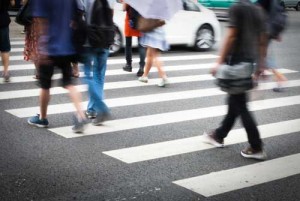 Walk Facing Traffic: If there is no sidewalk and you must walk on the side of the road, choose the side where you are facing oncoming traffic. In North America, this is the left side of the road. This gives you the best chance to see traffic approaching closest to you and take evasive action when needed.
Walk Facing Traffic: If there is no sidewalk and you must walk on the side of the road, choose the side where you are facing oncoming traffic. In North America, this is the left side of the road. This gives you the best chance to see traffic approaching closest to you and take evasive action when needed.- Cross Safely: Mom was right: look both ways before crossing any street. At controlled intersections, it is wise to cross only when you have the pedestrian crossing light, but even then, drivers and bikers may have a green light to turn and won’t be expecting you to be in the crosswalk. Make eye contact with any drivers who may be turning. Give them a wave. Make sure they see you. In a car-walker interaction, you can only lose.
- Walk Single File: Unless you are on a sidewalk separated from the road or a wide bike lane, you should walk in single file. This is especially important on a road with lots curves, where traffic has only a split second chance of seeing you before hitting you. While it can be enjoyable to walk down the road two to three abreast chatting merrily, drivers don’t expect it and you may lose your best walking buddies.
- Stay Aware of Bikes and Runners: Share the road and path with bikes and runners. Bike riders should alert you when approaching from behind with a bike bell or a “passing on the left/right.” Listen for them, and move to walk single file, allowing them to pass safely. Runners should also call out for passing. Bike-walker collisions can result in broken bones or head injury for either — and you aren’t wearing a helmet.
- Be Visible: Wear bright colors when walking in daytime. When walking at night, wear light-colored clothing and reflective clothing or a reflective vest to be visible. Drivers are often not expecting walkers to be out after dark, and you need to give them every chance to see you, even at street crossings that have crossing signals. Be just as cautious at dawn or twilight, as drivers still have limited visibility or may even have the setting or rising sun directly in their eyes.
- Be Predictable: Make a practice of staying on one side of the path while walking rather than weaving randomly from side to side. Watch your arm motions, or you may end up giving a black eye to a silently passing walker, runner or biker.
- Keep the Volume Down: Don’t drown out your environment with your iPod. Keep the volume at a level where you can still hear bike bells and warnings from other walkers and runners. Your audiologist will also thank you.
- Hang Up and Walk: Chatting on a cell phone while you walk is as dangerous as chatting while driving. You are distracted and not as aware of your environment. You are less likely to recognize traffic danger, passing joggers and bikers or tripping hazards. Potential criminals see you as a distracted easy target.
- Walk Dogs on Short Leashes: I’ve seen many tragedies of dogs running out in to traffic or getting into a fatal dog fight either off leash or on a very long leash. Don’t trip up other walkers or bikers with poor control of your pet. Keep your pet and yourself safe by learning proper leash walking.
- Know When to Stop Walking: Heat sickness, dehydration, heart attack or stroke can strike walkers of any age. Learn the symptoms of medical emergencies and carry a cell phone to dial 911.
- Be Aware of Stranger Danger: Choose your walking route for paths frequented by other walkers, joggers and bikers. If you see someone suspicious, be prepared to alter your course or go in to a store or public building to avoid them. Acting alert and aware can convince bad guys to choose an easier target.
via Walking Safety Rules.
Accident Investigation
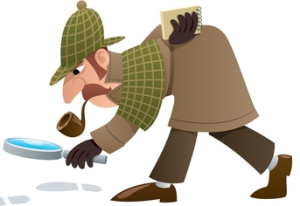 Thousands of accidents occur throughout the United States every day. The failure of people, equipment, supplies, or surroundings to behave or react as expected causes most of them. Accident investigations determine how and why these failures occur. By using the information gained through an investigation, a similar, or perhaps more disastrous, accident may be prevented. It is important to conduct accident investigations with prevention in mind.
Thousands of accidents occur throughout the United States every day. The failure of people, equipment, supplies, or surroundings to behave or react as expected causes most of them. Accident investigations determine how and why these failures occur. By using the information gained through an investigation, a similar, or perhaps more disastrous, accident may be prevented. It is important to conduct accident investigations with prevention in mind.
Traumatic Occupational Injury
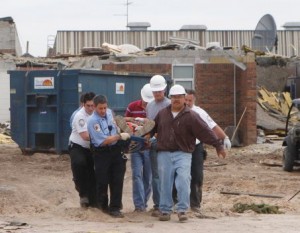 In 2010, there were an estimated 139,064,000 civilian workers in the U.S. private and public sector employed labor force, according to the Bureau of Labor Statistics Current Population Survey . Each day, many of these workers suffer injury, disability, and death from workplace incidents. In 2010, more than 4,500 U.S. workers died from occupational injuries. Although difficult to enumerate, annually about 49,000 deaths are attributed to work-related illnesses. In 2010, an estimated 3.9 million workers in private industry and state and local government had a nonfatal occupational injury or illness. Of those workers, 2 million were transferred, placed on work restrictions, or took time away from work. In the same year an estimated 2.6 million workers were treated in emergency departments for occupational injuries and illnesses, and approximately 110,000 of these workers were hospitalized (NIOSH, unpublished data, 2012).
In 2010, there were an estimated 139,064,000 civilian workers in the U.S. private and public sector employed labor force, according to the Bureau of Labor Statistics Current Population Survey . Each day, many of these workers suffer injury, disability, and death from workplace incidents. In 2010, more than 4,500 U.S. workers died from occupational injuries. Although difficult to enumerate, annually about 49,000 deaths are attributed to work-related illnesses. In 2010, an estimated 3.9 million workers in private industry and state and local government had a nonfatal occupational injury or illness. Of those workers, 2 million were transferred, placed on work restrictions, or took time away from work. In the same year an estimated 2.6 million workers were treated in emergency departments for occupational injuries and illnesses, and approximately 110,000 of these workers were hospitalized (NIOSH, unpublished data, 2012).
Each year occupational injuries and illnesses cause employers, workers, and society to pay tremendous costs for workers’ compensation and other insurance, medical expenses, lost wages and productivity, and the personal and societal costs associated with day to day living for injured and ill workers. In 2009, employers spent $74 billion on workers’ compensation insurance alone.
via CDC – Directory of NIOSH Traumatic Occupational Injury Resources.
Staying Safe on Campus
 Throughout your college career, you will have plenty of stressors in your life, such as exams, papers, presentations, jobs, friends, and even family. If you are like the average college student, you have or will have enough on your mind without having to worry about school safety, but unfortunately, in this day and age, staying safe on campus is an issue that students must think about. Because crime on college campuses has been on the rise within the past few years, it is crucial for students to follow certain safety tips. Click on the link at the bottom of this message to consider the tips so you stay protected during your time on campus.
Throughout your college career, you will have plenty of stressors in your life, such as exams, papers, presentations, jobs, friends, and even family. If you are like the average college student, you have or will have enough on your mind without having to worry about school safety, but unfortunately, in this day and age, staying safe on campus is an issue that students must think about. Because crime on college campuses has been on the rise within the past few years, it is crucial for students to follow certain safety tips. Click on the link at the bottom of this message to consider the tips so you stay protected during your time on campus.
Respirators
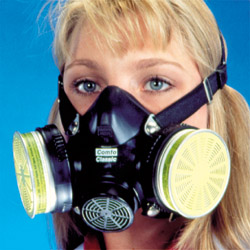 Respirators protect the user in two basic ways. The first is by the removal of contaminants from the air. Respirators of this type include particulate respirators, which filter out airborne particles; and “gas masks” which filter out chemicals and gases. Other respirators protect by supplying clean respirable air from another source. Respirators that fall into this category include airline respirators, which use compressed air from a remote source; and self-contained breathing apparatus (SCBA), which include their own air supply.
Respirators protect the user in two basic ways. The first is by the removal of contaminants from the air. Respirators of this type include particulate respirators, which filter out airborne particles; and “gas masks” which filter out chemicals and gases. Other respirators protect by supplying clean respirable air from another source. Respirators that fall into this category include airline respirators, which use compressed air from a remote source; and self-contained breathing apparatus (SCBA), which include their own air supply.
via CDC – Respirators – NIOSH Workplace Safety and Health Topic.
